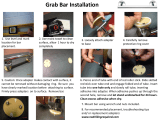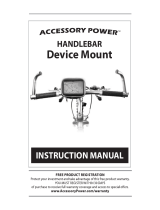
10
TO ENSURE SAFETY
• The operating temperature ranges for the battery are given below. Do not use the
battery in temperatures outside these ranges. If it is used or stored in temperatures
which are outside these ranges, fire, injury or problems with operation may occur.
1. During discharge: -10°C - 50°C
2. During charging: 0°C - 45°C
SM-BTR1: Lithium-ion battery (external type)
• If the battery does not become fully charged within the charging time, stop charging. If
this is not observed, fire, bursting, ignition, or overheating may occur.
SM-BTR2/BT-DN110/BT-DN110-A: Lithium-ion battery (built-in type)
• If the battery does not become fully charged after 4 hours of charging, stop charging. If
this is not observed, fire, bursting, ignition, or overheating may occur.
Battery charger/Battery charger cord
SM-BCR1: Battery charger for SM-BTR1
• Hold the power plug when connecting or disconnecting from the electrical outlet. Failure
to do so may cause a fire or electric shock.
• If the following symptoms are observed, stop using the device and contact the place of
purchase. A fire or electric shock may be caused.
* If the power plug is smoking or generating heat.
* There may be a bad connection inside the power plug.
• Do not overload the electrical outlet with appliances beyond its rated capacity, and use
only a 100 - 240 V AC electrical outlet. If the electrical outlet is overloaded by connecting
too many appliances using adapters, overheating resulting in fire may occur.
• Do not damage the power cord or power plug. (Do not damage, process, forcibly bend,
twist or pull them, bring them near hot objects, place heavy objects on them or bundle
them tightly together.) If they are used while damaged, fire, electric shocks or short-
circuits may occur.
• Do not use the battery charger with commercially-available electrical transformers
designed for overseas use (travel converters), as they may damage the battery charger.
• Always be sure to insert the power plug as far as it will go. If this is not observed, fire
may occur.
SM-BCR2: Battery charger for SM-BTR2/BT-DN110/BT-DN110-A
• Do not use any USB cable other than the USB cable which is supplied with the PC linkage
device. This may cause a charging error, fire, or failure to connect to PC due to
overheating.
• Do not connect the battery charger to PC when it is on standby. This may cause a PC
failure depending on its specifications.
























